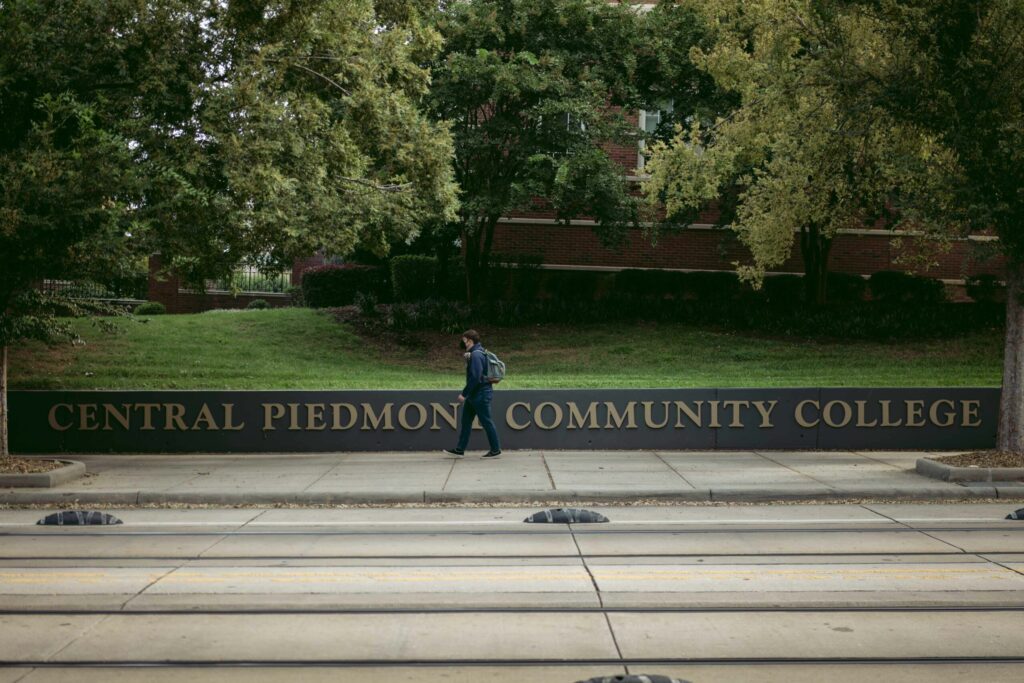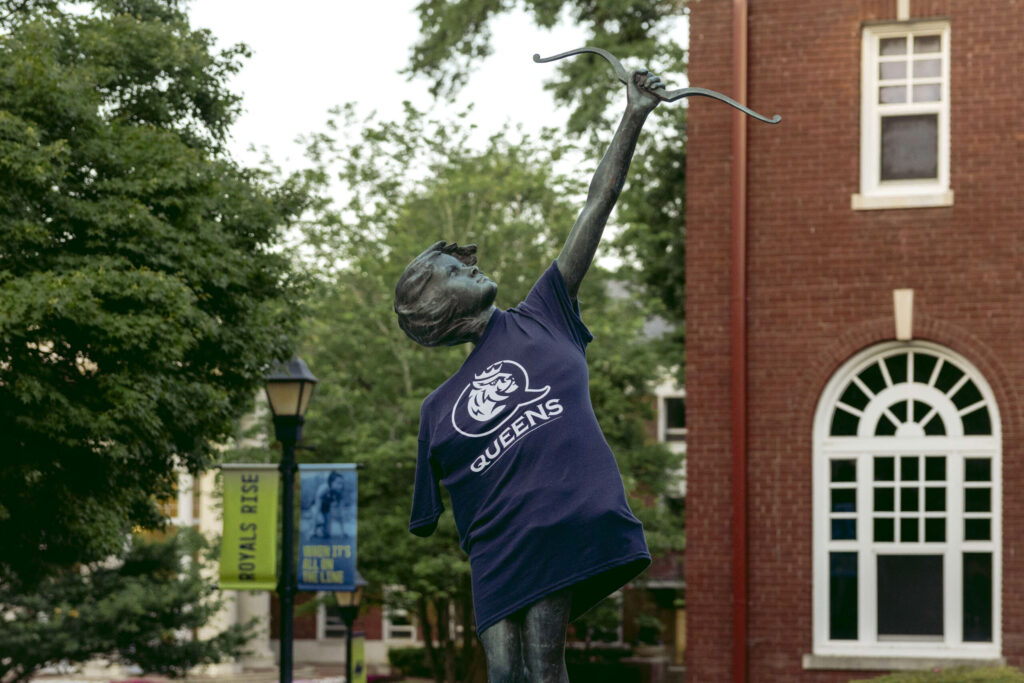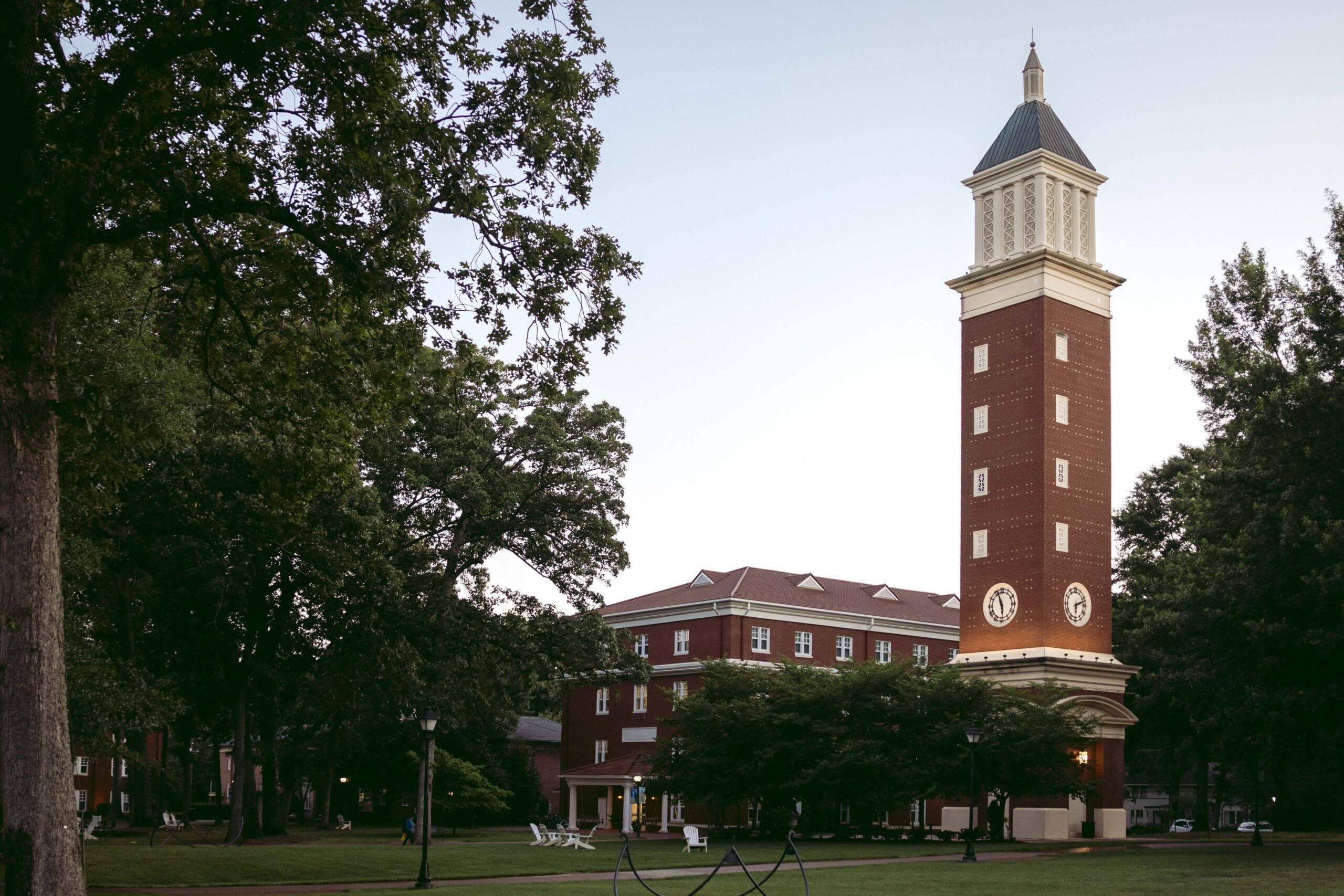Jesse Cureton was opening his car door at the Queens University president’s house on Wednesday night when a person passing by hollered at him.
“Thank you,” the person said, and then kept driving.
One day earlier, Cureton announced that Queens intends to merge with Elon University. The message buzzed through campus. Teachers paused classes. Students watched a video message. Faculty and staff forwarded emails wondering who knew what. And on a 75-degree morning, I watched clusters of people in the green spaces point at their phones and laptops. Online, questions rolled in: What about athletics? What will the new name be? Will Queens’ history be preserved? Why didn’t we know?
In one hour, Queens achieved something that rebranding campaigns and athletic accomplishments over the past decade couldn’t — it got people all across Charlotte talking about Queens.
Somewhat missing among the emotional response, though, was a colder, more practical reality: This was not only necessary for Queens’ financial survival, but a reflection of wider trends regarding higher education and Gen Z. Colleges across the country are trying to craft solutions for a future that includes fewer traditional freshmen, a job market favoring skills over lectures, and a generation that favors flexibility over debt.
So yes, Queens had to do something. The landlocked, 168-year-old Myers Park institution had become an afterthought in local conversations about higher education, overshadowed by the increasingly essential Central Piedmont Community College, the research leaps made at UNC Charlotte, the community investments in Johnson C. Smith, and the national recognition of Davidson College’s No. 10 Wall Street Journal ranking. Even Wake Forest made a bigger splash in Charlotte with its new medical school on The Pearl campus welcoming its first class in July.
The Queens-Elon merger makes Charlotte’s oldest college relevant, at a moment when relevance may be a university’s most important asset.
“The best of all worlds is to have the community talking about you,” Cureton, Queens’ interim president, told me. “There has not been anything that I have seen in the 10 or 12 years that I’ve been associated as a board member with this organization that has gotten us that level of attention.”
Combined, the universities have nearly 9,000 students, which leaders believe will help them weather an uncertain future that includes:
- The enrollment cliff: The number of 18-year-old high school graduates in the U.S. is expected to peak this year. Birth rates began spiraling during the Great Recession in 2008, and research predicts a 13 percent drop in the pool of college-age adults by 2041.
- A changing labor market: Hiring cooled across the U.S. this summer, and AI is hoovering up entry-level white-collar positions. A recent survey suggests that 42 percent of Gen Z workers are turning to trades, many of which don’t require four-year degrees.
- And of course there’s a general national sentiment, driven in part by politics and in part by Gen Z’s pragmatism, that college isn’t worth the cost, especially if you’re going to graduate with student debt.
The next 25 years will be a competitive time in higher education, and universities will have to stand out. Suddenly, ideas that would’ve been radical a generation ago are now rational. Elsewhere in the Charlotte region, Winthrop in Rock Hill reduced tuition last year, and Wingate this year expected a record number of transfer students in large part because of scholarships for local community college grads.
The Queens-Elon merger, if it goes through, will give Charlotte’s urban core a large four-year private option at a time when all of our colleges are seeking to define their niche in a crowded menu.

Where Gen Z is thriving

Consider Basira Ayazi, a 19-year-old who moved to the U.S. from Afghanistan in 2022, after the disorganized U.S. withdrawal left the Taliban in power there. She graduated from Hough High in 2024 and enrolled at CPCC that fall. She’s taking pre-dentistry classes, joined the Truist Honors program, and is vice president of the student government.
Or Merit Chukwukere, a 25-year-old who moved to the Charlotte area three years ago from Nigeria to pursue a nursing degree at CPCC. She’s finishing her coursework this year and, if she passes her exam, will be employable as a nurse — a credential hospitals are so desperate for that many will reimburse her degree.
When I asked Ayazi and Chukwukere about their generation’s outlook on college and careers, they were clear that pragmatism is a dominant line of thought. Ayazi said they’re “definitely thinking about the future ahead: Is this job going to be there when I graduate? Whether it’s 4 years or 8 years or 12 years, we want to be employed in the future.”
That puts CPCC in maybe the strongest position of all of Charlotte’s higher education institutions in this new era, given its focus on workforce training. The college hit another record for enrollment this fall, and has seen increases in its student body for 11 straight semesters.
It offers programs to train people in everything from nursing to automotive tech, culinary arts to welding, the basics of law enforcement to early childhood education. All for about $76 a credit hour. It’s also increased its dual enrollment program to include nearly 6,000 high school students who earn college credits before they receive a diploma. Some graduate fully work-ready, with certificates to work in certain fields.
CPCC’s biggest growth is in skilled trades — HVAC, plumbing, construction — a shift that leaders say reflects Gen Z’s preference for multiple careers over one long professional path.
“We’re at a generation now that’s not training for one career,” CPCC chief academic officer Heather Hill told me in August. “My generation, Generation X, I went to school for one thing, and I’ve spent my entire professional career in that pathway, but now I get the feeling from students that they are looking for their first career. I think our Gen Z students are saying, ‘What do I try first?’ … I think the Gen Z students are really looking at their professional lifespan in pieces.”
In some ways, Gen Zers have learned from and responded to the troubles that faced their rival predecessors. Millennials also graduated during a difficult time for jobs, the Great Recession. Gen Zers don’t want to end up facing the same challenges in their 20s, with loads of debt and a degree that won’t land in the wider market.
“Our millennial students, when they graduated, sometimes with a degree that they enjoyed, it was not necessarily a credential of value for immediate employment,” Hill told me. “Then they would find themselves coming to community colleges to earn a certificate or some type of add-on that made them job ready.”
CPCC’s enrollment in 2024-25 was around 52,000 students. It’s also cemented partnerships to ensure that students’ credits transfer seamlessly to four-year schools. CPCC is a top pipeline for UNC Charlotte, with more than 1,200 students moving from the community college to the university last year, Hill said.
That’s one reason one of the first conversations Cureton had this week after the Elon announcement was with CPCC president Kandi Deitemeyer, to discuss how the merger could pour gasoline on the RoyalUp program and other CPCC-Queens pathways.

The business playbook

If this all sounds familiar in Charlotte, it is. Partnerships over competition, options over loyalty, experiences over lectures, and pathways over wandering … they’re all trends and traditions in local business and government operations, too.
I spent Thursday at the N.C. Biotech Summit at The Pearl, a setting created through a collaboration among Advocate Health, Wexford Science & Technology, Wake Forest University, IRCAD, Siemens, and many others.
At the summit, Wexford CEO Tom Osha actually mentioned the college enrollment cliff as it pertains to healthcare and life sciences.
“It’s no longer enough to sit on your laurels and say, ‘I got a great brand, and that’s going to bring the world to my doorstep.’ And universities around the world, who have some pretty darn good brands, are finding that out,” Osha said. “That is why it is so important to lean in like what you’re seeing here in The Pearl.”
Advocate Health CEO Gene Woods, a close friend of Cureton’s, has been central to The Pearl effort, and he’s widely regarded as one of Charlotte’s top conveners. Cureton told me he called Woods this week about the Elon merger and said, “This is one out of the Gene Woods book.”
Partnerships are also part of Charlotte’s DNA. The city’s banking heartbeat was born in the 1980s and 1990s when North Carolina National Bank acquired and merged with dozens of banks to become Bank of America. Former BofA CEO Hugh McColl was the ringleader for all that, and he happens to be a Queens board member. He spoke at the Tuesday announcement, saying, “For Charlotte, it’s a tremendous gift. … This is going to turn out to be one of the most important things that’s ever happened in this city.”
Then he looked at Elon president Connie Book and said, “And it’s in your hands, young lady.”

‘Stop looking at your belly button’

Book is from Louisiana, and on one of her first visits to Charlotte, she ate at Cajun Queen on Seventh Street. “And it was good,” she said.
She dove into Charlotte’s history through coffee table books, and in our conversation she rattled off fun facts about how the city created air-conditioning, led the department store boom through Belk, and how the Mint Museum is in the original U.S. Mint branch.
She also studied the city’s growth, now with more than 150 people moving to the region each day, and said she wanted Elon to be part of that. Elon opened a law school campus in South End in 2024. Then, earlier this year, after the departure of Queens president Dan Lugo, she began talks with Cureton, who at the time was the Queens board chair, about creating deeper ties.
Before she became Elon’s president, Book was chief academic officer at The Citadel, where she had to complete boot camp. She remembers one Air Force general’s piece of advice that guides her as she makes decisions about Elon’s future: “Stop looking at your belly button. Look up, there’s the enemy.”
The enemy, in this case, is declining enrollment and rising costs. Elon’s enrollment has dipped, down 11.6 percent from last year. Queens, meanwhile, has endured a more than 30 percent decline over the past decade. In the summer of 2024, the university froze wages and cut some staff. This year’s freshman class improved to 331 from 261 last year — a hopeful sign, but not enough to ignore the cliff.
For Cureton, a west Charlotte native and Queens MBA alum who’s a longtime local business leader, preserving Queens became personal. Elon, with far more wealth, could offer stability. Queens, in turn, offered Elon something it lacked: a campus in one of North Carolina’s most prestigious neighborhoods that could put students at the heart of Charlotte’s booming economy.
Talks went from there. They brought the boards into the conversation with nondisclosure agreements, then some senior leadership.
Many complained that Tuesday’s announcement came out of nowhere. Cureton countered that it was simply the first public disclosure of ongoing talks. The universities have agreed to a nonbinding letter of intent, meaning this is basically the engagement before marriage. Each school will have listening sessions with students, staff, and their wider communities over the next several months.
When I met with Cureton in his office in the days after the announcement, I asked him what he’d been working on, and he shook his head and said he’d been correcting misinformation being passed around online. Nothing is decided, he said: They don’t have a name yet, but they’re committed to keeping Queens as part of the brand; they intend to keep both athletics departments for the next three or four years; and they don’t expect layoffs. And yes, Elon will be the leading institution given its size (the combined university would have 47 board members, and 10 of them would be from Queens), but Cureton said that early reports that Queens will become a graduate campus aren’t accurate.
He also dropped a bit of news for the Charlotte campus: The two organizations have already committed to upgrading or building a new library at Queens, one that not only serves as a research center but community spaces for campus events and other community conversations.
That ties back to the relevancy conversation. With a smaller pool of four-year college students in the future, Elon and Queens say they want to meet students where they are. And students today want experiences.
“Colleges should be, at their very best, a place where ideas are debated and questions of ethics and morals and responsibility are raised, where the intersection between issues and religion and economics and policy are debated and brought to the forefront,” Book told me. “They should be the convening spaces for those things.”
In fact, Book told me, she can envision a day in the future where the combined university uses its two campuses as a way to recruit. She says that some people call Elon a “botanical garden” because of its beauty and landscape. And Queens, obviously, gives Elon another property with another set of benefits.
“I like the idea that a student may say, ‘I’m going to do my first couple of years on the Alamance County campus of Elon and then I’m gonna go do my co-op at Bank of America and I’m going to live at Queens when I do that,’” Book said. “People are rethinking these four years. I do think there’s going to be a lot more of these kinds of opportunities for students that reflect different interests at a different pace.”
Mergers, of course, aren’t magic. They take years to align faculties, systems, and alumni expectations. A 40-plus member board will be unwieldy. And while Book and Cureton promise stability and strength, athletics, budgets, and donor loyalty could all experience periods of turbulence.
But in a city that thrives on partnerships and expansions, and with a generation of students unlike any before it, all of our colleges and universities will play a role in securing the future workforce. Queens has chosen its path to relevancy, and it’s scale over solitude.
Editor’s note: We updated this story to show that CPCC’s 2024-25 enrollment was about 52,000 students.
